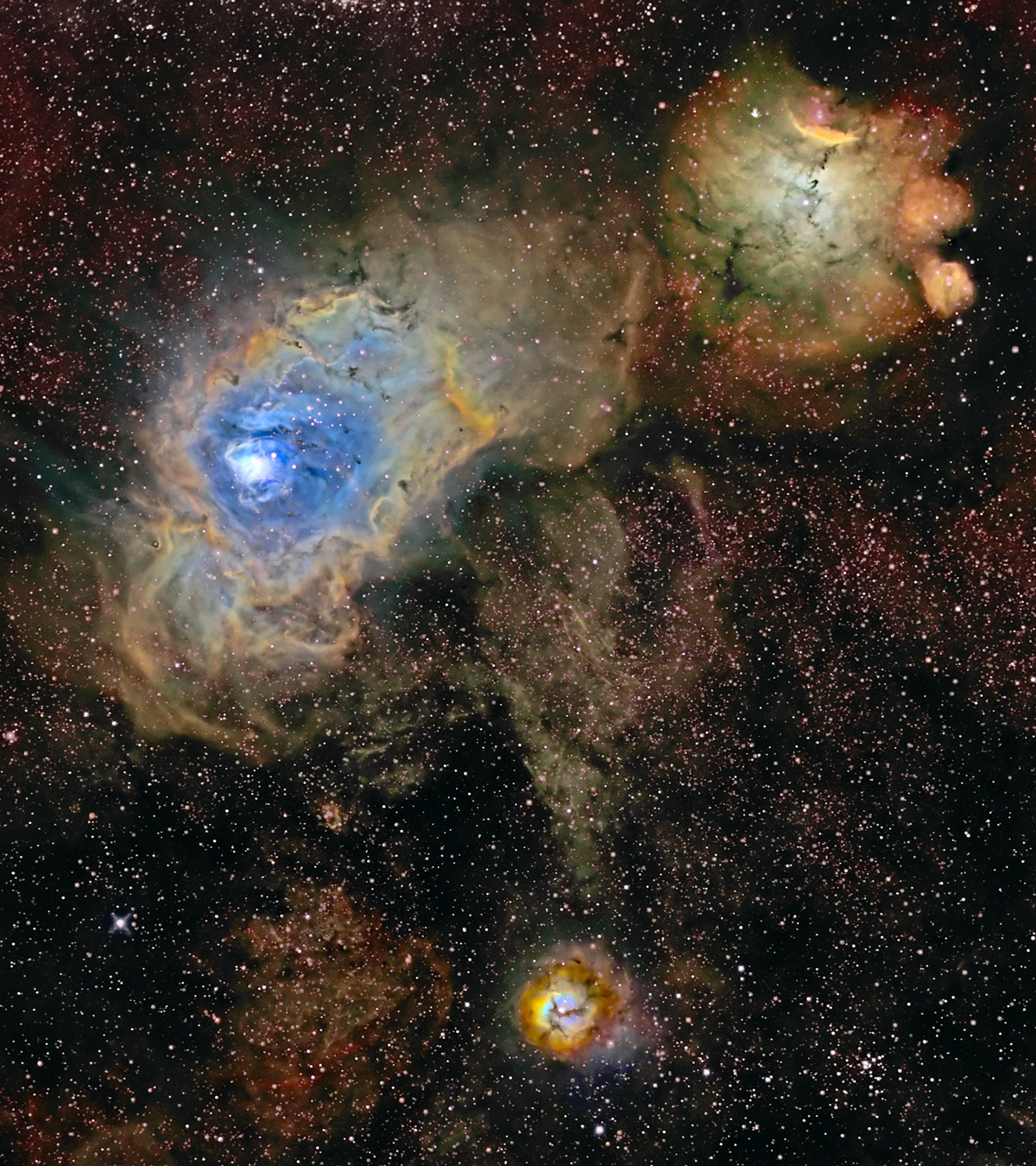 You do it every day: step outside. Have you ever thought about what's below you? What's above you? It's not exactly the Devil and the Deep Blue Sea, but those are passable metaphors for the mind-boggling wonders right above us and below us. It's a little thrilling, and a little scary, to realize just where we're standing.The only thing between you and the vacuum of outer space is air: notquite emptiness, as we now know, but it's just a thin layer of gases hugging the planet like water vapor over a cold drink. There's no roof. Nothing holding it in but gravity. There's air, and then less air, and then...truly empty space, trillions upon trillions of miles of cold, deadly void, about -400° F.At three miles up, breathing becomes difficult. Think about a three mile walk: that's not a very great distance! At five miles up, there's not enough oxygen to survive. The last wispy molecules of atmosphere peter out at around 60-70 miles.That precious, flimsy envelope of nitrogen, carbon dioxide, oxygen and other gases is a tissue-thin halo around our planet. (Earth is about 7,900 miles in diameter). Yet that blanket of air burns up most of the meteorites headed our way, protects us from solar and intersteller radiation, keeps us warm, and makes life possible.The fact that carbon exists both on Earth and in interstellar space is no coincidence. Like most of the other elements our planet is made of, including iron, silicon, nitrogen and oxygen, carbon is forged in the thermonuclear fires inside stars. Most of the substance of our bodies, our houses, our technology — and of the fossil fuels we’re now burning at an unsustainable rate — were once literally in center of a long-dead star. When the stars finally die, these elements are blown out into space where they form into huge clouds, trillions of miles across. Eventually, the clouds collapse to form new stars, and with them, planets and people. Beyond Earth's atmophere, we quickly soar off into unimaginable distances. It's 93 million miles to the Sun. Even from within our own solar system — in Saturn's neighborhood — planet Earth looks like a dot. Our solar system in turn is just a grain of sand in the Milky Way Galaxy, a glittering island of stars 100,000 light years across (one light year is about 6 trillion miles) in the cosmic ocean. There are billions of galaxies out there in deep space, separated by distances that make our galaxy itself look like a gnat on the brow of God. ...
You do it every day: step outside. Have you ever thought about what's below you? What's above you? It's not exactly the Devil and the Deep Blue Sea, but those are passable metaphors for the mind-boggling wonders right above us and below us. It's a little thrilling, and a little scary, to realize just where we're standing.The only thing between you and the vacuum of outer space is air: notquite emptiness, as we now know, but it's just a thin layer of gases hugging the planet like water vapor over a cold drink. There's no roof. Nothing holding it in but gravity. There's air, and then less air, and then...truly empty space, trillions upon trillions of miles of cold, deadly void, about -400° F.At three miles up, breathing becomes difficult. Think about a three mile walk: that's not a very great distance! At five miles up, there's not enough oxygen to survive. The last wispy molecules of atmosphere peter out at around 60-70 miles.That precious, flimsy envelope of nitrogen, carbon dioxide, oxygen and other gases is a tissue-thin halo around our planet. (Earth is about 7,900 miles in diameter). Yet that blanket of air burns up most of the meteorites headed our way, protects us from solar and intersteller radiation, keeps us warm, and makes life possible.The fact that carbon exists both on Earth and in interstellar space is no coincidence. Like most of the other elements our planet is made of, including iron, silicon, nitrogen and oxygen, carbon is forged in the thermonuclear fires inside stars. Most of the substance of our bodies, our houses, our technology — and of the fossil fuels we’re now burning at an unsustainable rate — were once literally in center of a long-dead star. When the stars finally die, these elements are blown out into space where they form into huge clouds, trillions of miles across. Eventually, the clouds collapse to form new stars, and with them, planets and people. Beyond Earth's atmophere, we quickly soar off into unimaginable distances. It's 93 million miles to the Sun. Even from within our own solar system — in Saturn's neighborhood — planet Earth looks like a dot. Our solar system in turn is just a grain of sand in the Milky Way Galaxy, a glittering island of stars 100,000 light years across (one light year is about 6 trillion miles) in the cosmic ocean. There are billions of galaxies out there in deep space, separated by distances that make our galaxy itself look like a gnat on the brow of God. ... ....
....
What does it feel like to fly over planet Earth?
The World Would Be Better If Everyone Watched This Video:


 ....1]
....1]




No comments:
Post a Comment